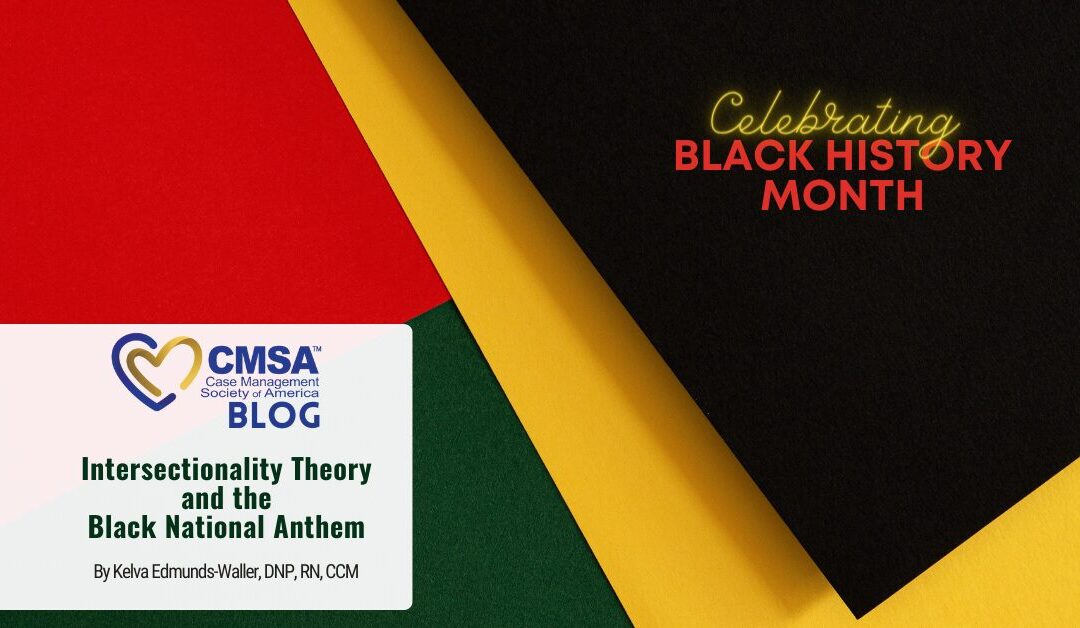By Kelva Edmunds-Waller, DNP, RN, CCM
Over the past year, the word “intersectionality” has become a part of my lexicon as I search for potential presenters to speak on topics related to social injustices, inequities, and disparities in healthcare. In 1989, Kimberlé Crenshaw, a professor, Black feminist, American civil rights advocate, and leading scholar of critical race theory, coined the term “intersectionality” as a social theory in her research. She used the term metaphorically to describe how multiple forms of inequality or disadvantage compound or combine to create barriers not understood by conventional or linear thinking.
Crenshaw’s research challenged anti-discrimination law that used a single-axis perspective to identify and address discrimination. The law’s limited perspective did not address the double oppression faced by Black women marginalized by both their racial and gender identities. The law only allowed women seeking a legal remedy for discrimination to choose either race or gender, but not both. Intersectionality is a lens to examine how biological, social, and cultural identities intersect and overlap in multiple dimensions in a person’s lived experiences. The traits of an individual are linked to their social identities and the social identities of groups with similar identities and lived and shared experiences.
In February, we recognize, celebrate, and reflect on the achievements of people of the African diaspora. Remembrances during February include the integral and crucial roles that Africans and African Americans played in building the country that we call America.
The singing of the Black National Anthem, “Lift Every Voice and Sing,” is at the heart of celebrations during Black History Month. The Super Bowl also occurs in February. Beginning in 2020, the NFL committed to singing “Lift Every Voice and Sing” during the Super Bowl pregame show. The NFL’s decision came in the wake of racial and social injustices that ignited massive protests following the murder of George Floyd. In the aftermath, people of every race, faith, gender, national origin, and creed marched to protest police brutality. Protestors united on common ground against racism and other intersectional issues, including women’s rights, reproductive rights, LGBTQ rights, and immigration rights. The movement exemplified the intersectionality of social injustices that overlap race, gender, sexual orientation, and ethnicity.
The lyrics of “Lift Every Voice and Sing” speak to the intersection and multidimensional lived experiences of people of every race, ethnicity, nationality, creed, religion, gender, and gender identity marginalized and invisible. For over one hundred twenty years, this iconic hymn has held a powerful place in Black History and, therefore, American history. Pinned as a poem by James Weldon Johnson and set to music as a hymn by his brother Rosamond Johnson. The hymn lyrics speak of God, a dark past, and a hopeful future. The future is bright and gleaming, far removed from a past shadowed by social injustice and systemic racism not only for Black Americans but for all Americans. Verse two speaks to a new future:
Out from the gloomy past,
‘Til now we stand at last
Where the white gleam of our bright star is cast.
The Beloved Community Equity Audit is a great starting place for organizations desiring to create meaningful change in policies and practices related to diversity, equity, and inclusion. There is a free assessment measuring DEI indicators across the functional area of an organization. https://www.wearebeloved.org/blog/awa-equity-audit
Bio: Kelva Edmunds-Waller, DNP, RN, CCM has nearly 40 years of nursing experience, including over 20 years in leadership roles. She has clinical experience in acute care, home health, infusion therapy, public health, managed care, primary care, and long-term acute care. She earned a DNP degree at Loyola University New Orleans. She completed her undergraduate and graduate nursing degrees at Virginia Commonwealth University in Richmond, VA. Kelva serves as President of the Central Virginia Chapter of CMSA and is a member of the CMSA Editorial Board.

